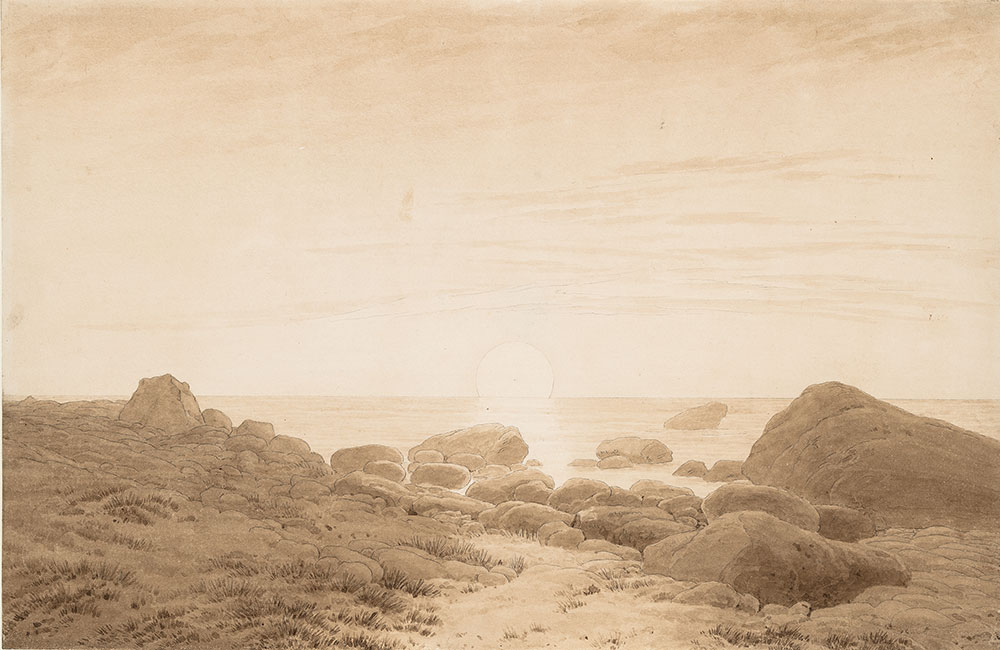
This large sepia study attentively renders a constellation of boulders, stones, and pebbles scattered on a beach. Infused with quiet melancholy and devoid of signs of human presence, the work explores atmospheric conditions and the effects of light. It is difficult to know whether the luminous celestial body at the center of the composition is supposed to represent the moon or the sun. In either case, Friedrich’s predominant concern is depicting the moment of transition between night and day, darkness and light.
Caspar David Friedrich
German, 1774–1840
Stony Beach at Moonrise (Stony Beach with Setting Sun), ca. 1835–37
Brush and brown ink over graphite pencil
Kupferstich-Kabinett, Staatliche Kunstsammlungen Dresden, INV. NO. C 2605
© Kupferstich-Kabinett, Staatliche Kunstsammlungen Dresden
Photo: Andreas Diesend
Jennifer Tonkovich, Eugene and Clare Thaw Curator of Drawings and Prints
At the time he drew this sheet, Friedrich was entering his 60s and recovering from a lingering professional disappointment. A decade prior, he failed to ascend to the position of teaching landscape painting at the Dresden Academy and experienced a year long illness, events that left him pensive and increasingly isolated. After he suffered a stroke in 1835, he could no longer paint and resumed making wash drawings. Given Friedrich’s deep spirituality, it isn’t surprising that his late drawings reflect a more somber state of mind as he dwelled on thoughts of life’s end.
The reverence that he had for nature emerges in the way he wields his materials to evoke this tranquil coastal scene, devoid of figures. Friedrich returned to a sketch he had made of the beach at Rugen in 1801 and transferred part of it to this sheet. The evocation of this specific site at moonlight engaged Friedrich’s memory and lived experience, and this underlying sense of time’s passage lends an elegiac tone to this tranquil view.
